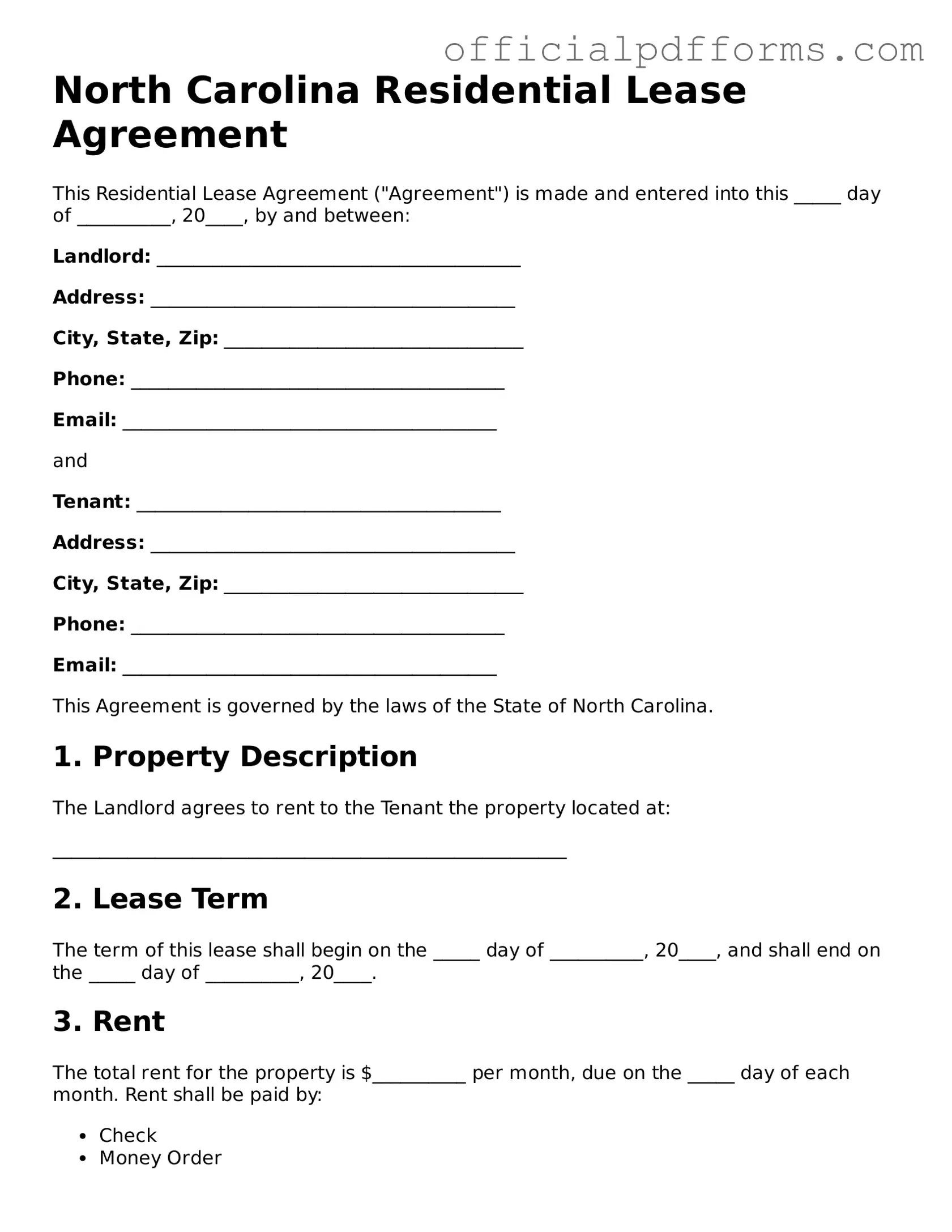Printable North Carolina Residential Lease Agreement Template
The North Carolina Residential Lease Agreement is a legally binding document that outlines the terms and conditions between a landlord and tenant for renting residential property. This form serves to protect the rights of both parties while ensuring a clear understanding of responsibilities, payment terms, and property maintenance. To get started on your rental journey, fill out the form by clicking the button below.
Access Form Online
